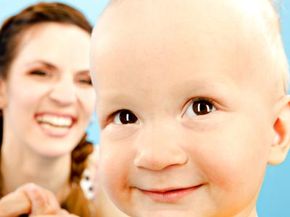You've likely been told (or read in a forwarded e-mail) that it takes fewer muscles to smile than it does to frown, and that, in light of this fact, you should smile more often. There are quite a few numbers that get tossed around when this line is used. Some claim it takes 43 muscles to frown and 17 to smile, but open Aunt Milda's chain letter and you might be surprised to learn it takes 26 to smile and 62 to frown. And some naysayers claim it's quite the opposite, that in fact it takes more muscles to smile than to frown.
When we make facial expressions, we're essentially transmitting a packet of information that can be received, read and interpreted by others. By contracting or expanding our facial muscles in different degrees and combinations, we can produce thousands of different messages that provide cues to our overall emotional state, our short-term feelings about our immediate environment, our mental well-being, our personality and mood, our physical health, our creditability and whether or not we view others as being creditable.
Advertisement
The smile -- transmitted either consciously or subconsciously -- is viewed across cultures as a sign of friendliness, especially when greeting someone. Frowns, too, are generally recognized as indicating sadness or disapproval.
There are 43 muscles in the face, most of which are controlled by the seventh cranial nerve (also known as the facial nerve). This nerve exits the cerebral cortex and emerges from your skull just in front of your ears. It then splits into five primary branches: temporal, zygomatic, buccal, mandibular and cervical. These branches reach different areas of the face and enervate muscles that allow the face to twist and contort into a variety of expressions.
However, nobody has really come up with a definitive number for how many muscles it takes to smile or frown -- one person's smile is another person's smirk. Also, not everyone has the same number of facial muscles; some have more, enabling a wider range of expression, while some people actually have 40 percent fewer [source: Devlin].
The truth is that people smile -- and frown -- differently, even when presented with similar stimuli. There is an even wider range of variety when one begins using different expressive muscles for the eyes, mouth, nose and forehead.
So will this divisive matter ever be resolved?
Advertisement

